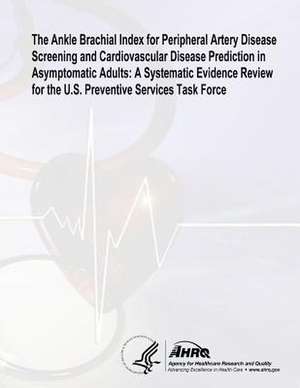The Ankle Brachial Index for Peripheral Artery Disease Screening and Cardiovascular Disease Prediction in Asymptomatic Adults
Autor U. S. Department of Heal Human Services, Agency for Healthcare Resea And Qualityen Limba Engleză Paperback
Preț: 124.74 lei
Preț vechi: 131.30 lei
-5% Nou
Puncte Express: 187
Preț estimativ în valută:
23.87€ • 25.52$ • 19.90£
23.87€ • 25.52$ • 19.90£
Carte disponibilă
Livrare economică 27 martie-10 aprilie
Preluare comenzi: 021 569.72.76
Specificații
ISBN-13: 9781499181036
ISBN-10: 1499181035
Pagini: 114
Dimensiuni: 216 x 279 x 6 mm
Greutate: 0.28 kg
Editura: CREATESPACE
ISBN-10: 1499181035
Pagini: 114
Dimensiuni: 216 x 279 x 6 mm
Greutate: 0.28 kg
Editura: CREATESPACE
